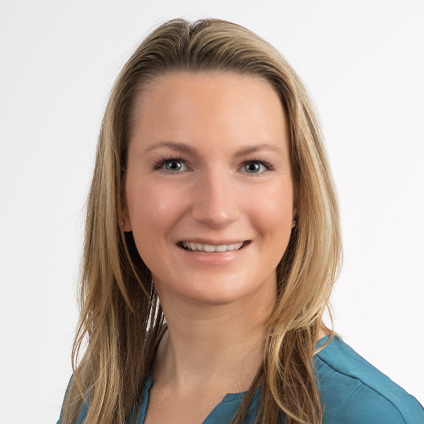El poder del juego de simulación en niños
Cómo ayuda la imaginación al desarrollo de habilidades emocionales y sociales en niños.
Experto clínico: Kathryn L. Keough, PhD
in EnglishEl juego de simulación, también conocido como juego imaginativo, brinda un poderoso y divertido contexto de simulación para que los niños expresen su creatividad y desarrollen habilidades socioemocionales. El juego de simulación va evolucionando conforme crecen los niños.
Los niños de dos años comienzan representando escenarios con muñecos de peluche, muñecas o figuras, y tienden a utilizar estos juguetes realistas para imitar situaciones que les son familiares. Por ejemplo, un niño de dos años podría jugar a que su perro de peluche camina y toma agua de un plato.
Alrededor de los tres años, surge el juego simbólico. Este involucra utilizar un objeto como si fuera otro o asignarle a un objeto propiedades diferentes de las que tiene en realidad. Algunos ejemplos podrían ser que el niño utilice una caja como cuna para su bebé de juguete, que su creación hecha de bloques maúlle como un gato o imaginar que un plato vacío está lleno y con él alimenta a sus figuritas de animales.
Después de los tres años, el juego de simulación se vuelve más complejo y de naturaleza social. Los niños empiezan a incorporar objetos imaginarios, crear narrativas más detalladas y mundos de fantasía, además de hacer juegos de rol dramáticos con sus amigos. De los tres a los cinco años entran en lo que se considera la “temporada alta” del juego imaginativo, aunque el juego de simulación sigue presente hasta la infancia media.
La investigación nos muestra que, mientras los niños se divierten creando mundos de fantasía y actuando sus historias, también están desarrollando habilidades en áreas clave.
Beneficios del juego de simulación
Los niños que practican juegos de simulación con más frecuencia suelen tener habilidades más fortalecidas en varias áreas importantes.
- Creatividad: El juego de simulación es infinito, lo que significa que no hay límites para las historias o los mundos que los niños pueden crear. También pueden pensar creativamente sobre formas de utilizar objetos para propósitos nuevos o usar la magia de su imaginación, como cuando colocan una corona invisible en la cabeza de un amigo para convertirlo en rey. Este tipo de juego puede apoyar el desarrollo de habilidades de pensamiento creativo y de resolución de problemas.
- Habilidades emocionales: Cuando practican el juego de simulación, los niños tienen la oportunidad de explorar sus emociones de una forma única. Pueden practicar el acto de tranquilizar el llanto de su bebé de juguete o actuar como si fueran monstruos iracundos. Los niños que más se involucran en este tipo de juego tienen un mayor conocimiento de las emociones y mayor regulación y control emocional. El juego de roles los puede ayudar a desarrollar estas habilidades al permitirles expresar emociones distintas a las que están sintiendo, para mantenerse en el personaje o adecuarse a la situación que están actuando.
- Habilidades sociales: El juego de simulación con hermanos y otros niños les da a los niños una oportunidad natural de desarrollar sus habilidades sociales al elegir roles, crear un mundo y una historia compartidos y resolver cualquier conflicto que pueda surgir. El juego de simulación parece fomentar el desarrollo de la teoría de la mente, que es la capacidad de reconocer que otras personas pueden tener creencias, intenciones, pensamientos y sentimientos diferentes a los propios.
- Función ejecutiva: En el juego de simulación, los niños usan activamente sus habilidades de función ejecutiva para comprender y mantener la frontera entre la simulación y la realidad. Los niños que practican el juego de simulación tienen habilidades más fuertes en áreas como la memoria de corto plazo y el pensamiento flexible, y son más capaces de esforzarse hasta conseguir sus objetivos.
- Lenguaje y comunicación: El juego de simulación parece fomentar el desarrollo del lenguaje en los niños. Los niños cuyos juegos incluyen historias y mundos de simulación elaborados tienen un vocabulario más avanzado y habilidades para reproducir historias.
El juego de simulación es una forma en la que los niños trabajan áreas importantes del desarrollo, al tiempo que adquieren habilidades específicas que tienen beneficios potenciales en el largo plazo a nivel social, emocional, académico y más.
Fomentar el juego de simulación
Si pones a su disposición materiales adecuados y juegas con ellos, puedes promover el juego de simulación y abrazar la magia de la imaginación de tus hijos.
- Materiales y juguetes: Los juguetes realistas, como las muñecas y otros que permiten crear escenarios de la vida real, son los más útiles para involucrar en el juego de simulación tanto a niños pequeños como a niños en edad preescolar. Desde alrededor de los tres años en adelante, se puede alentar el juego dramático al poner a su disposición disfraces y accesorios de tamaño real. Los niños pueden usar estos materiales de juego, además de su imaginación, para representar infinidad de roles y crear sus propios mundos de fantasía.
- Jugar con ellos: ¡Los mayores pueden alentar el juego de simulación si se unen a la diversión! Aunque es importante que los niños aprendan a jugar solos y con otros niños, el juego entre padres e hijos también tiene muchos beneficios. Jugar cinco minutos cada día puede fortalecer la relación entre padres e hijos, en especial si el padre se une al mundo de juego del niño y le sigue la corriente. Los padres también pueden alentar el juego de simulación demostrando cómo usar de forma creativa los objetos y cómo representar a algún personaje.

